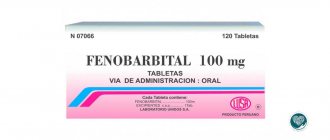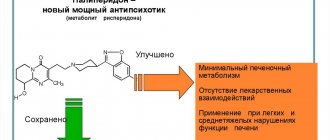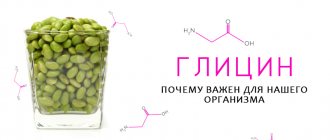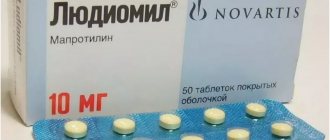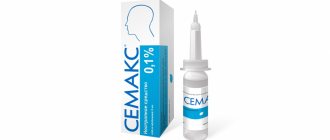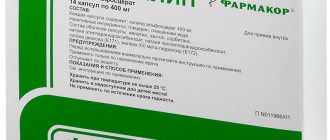Write a review
Reviews: 0
Manufacturers: Pliva Hrvatska doo (Republic of Croatia)
Active ingredients
- Not indicated. See instructions
Disease class
- Depressive episode
- Recurrent depressive disorder
Clinical and pharmacological group
- Not indicated. See instructions
Pharmacological action
- Antidepressant
Pharmacological group
- Antidepressants
Velafax oral tablets
Instructions for medical use of the drug
Description of pharmacological action
The antidepressant, which does not chemically belong to any class of antidepressants (tricyclic, tetracyclic or others), is a racemate of two active enantomers. The mechanism of the antidepressant effect of the drug is associated with its ability to potentiate the transmission of nerve impulses to the central nervous system. Venlafaxine and its main metabolite O-desmethylvenlafaxine (ODV) are strong serotonin and norepinephrine reuptake inhibitors and weak dopamine reuptake inhibitors. In addition, venlafaxine and EDV reduce beta-adrenergic reactivity both after a single dose and with chronic use. Venlafaxine and EDV are equally effective in inhibiting the reuptake of neurotransmitters. Venlafaxine has no affinity for muscarinic, cholinergic, histamine H1 and adrenergic receptors in the brain. Does not inhibit MAO activity. Has no affinity for opioid, benzodiazepine, phencyclidine or NMDA receptors.
Indications for use
- treatment and prevention of depression of various etiologies.
Release form
tablets 37.5 mg; blister 14, cardboard pack 2; tablets 37.5 mg; blister 14, cardboard pack 4; tablets 75 mg; blister 14, cardboard pack 2; tablets 75 mg; blister 14, cardboard pack 4;
Pharmacokinetics
Absorption After taking the drug orally, venlafaxine is well absorbed from the gastrointestinal tract. After a single dose of the drug at a dose of 25-150 mg, Cmax is achieved within approximately 2.4 hours and is 33-172 ng/ml. After taking the drug with food, the time to reach Cmax in the blood plasma increases by 20-30 minutes, but the values of Cmax and absorption do not change. Metabolism Subjects to intensive metabolism during the “first pass” through the liver. The main metabolite is O-desmethylvenlafaxine. In the range of daily doses of 75-450 mg, the pharmacokinetics of venlafaxine and EDV are linear. Elimination T1/2 of venlafaxine and EDV are 5 and 11 hours, respectively. Cmax EDV in blood plasma of 61-325 ng/ml is achieved approximately 4.3 hours after administration. The binding of venlafaxine and EDV to plasma proteins is 27% and 30%, respectively. EDV and other metabolites, as well as unchanged venlafaxine, are excreted by the kidneys. With repeated administration of venlafaxine Css and EDV are achieved within 3 days. Pharmacokinetics in special clinical situations In patients with liver cirrhosis, the plasma concentrations of venlafaxine and EDV are increased, and the rate of their elimination is reduced. In moderate or severe renal failure, the total clearance of venlafaxine and EDV is reduced; and T1/2 increases. A decrease in total clearance is mainly observed in patients with CC less than 30 ml/min. The age and gender of the patient do not affect the pharmacokinetics of the drug.
Use during pregnancy
Velafax is contraindicated during pregnancy and lactation. Women of childbearing age should use effective contraception while taking Velafax. Patients should be warned about the need to immediately consult a doctor if pregnancy occurs while taking Velafax. Venlafaxine and its metabolite EDV are excreted in breast milk. The safety of these substances for newborns has not been established.
Use for renal impairment
Mild renal failure (GFR more than 30 ml/min) does not require dosage adjustment. For moderate renal failure (GFR 10-30 ml/min), the dose should be reduced by 25-50%. Due to the prolongation of T1/2 of venlafaxine and its active metabolite (EDM), such patients should take the entire dose 1 time/day. In severe renal failure (GFR less than 10 ml/min), the use of Velafax is not recommended, since experience with such therapy is limited. Patients on hemodialysis may receive 50% of the usual daily dose of venlafaxine after completion of hemodialysis.
Contraindications for use
- severe liver dysfunction; - severe renal dysfunction (GFR less than 10 ml/min); - children and adolescents up to 18 years of age; - established or suspected pregnancy; - lactation period (breastfeeding); - simultaneous use of MAO inhibitors; - hypersensitivity to the components of the drug. Use with caution in cases of recent myocardial infarction, unstable angina, arterial hypertension, tachycardia, history of convulsive syndrome, increased intraocular pressure, angle-closure glaucoma, history of manic state, predisposition to bleeding, and initially low body weight.
Side effects
Most of the side effects listed below are dose dependent. With long-term treatment, the severity and frequency of most of these effects decreases, and there is no need to discontinue therapy. Frequency of side effects: often - ≥1%, sometimes - ≥0.1% - From the digestive system: loss of appetite, constipation, nausea, vomiting, dry mouth; rarely - hepatitis. Metabolism: increased serum cholesterol levels, decreased body weight; sometimes - changes in laboratory tests of liver function, hyponatremia, syndrome of insufficient secretion of antidiuretic hormone. From the cardiovascular system: arterial hypertension, hyperemia of the skin; sometimes - postural hypotension, tachycardia. From the central nervous system and peripheral nervous system: unusual dreams, dizziness, insomnia, increased excitability, paresthesia, stupor, increased muscle tone, tremor, yawning; sometimes - apathy, hallucinations, muscle spasms, serotonin syndrome; rarely - epileptic seizures, manic reactions, as well as symptoms reminiscent of neuroleptic malignant syndrome. From the urinary system: dysuria (mainly difficulty at the beginning of urination); sometimes - urinary retention. From the reproductive system: disorders of ejaculation, erection, anorgasmia; sometimes - decreased libido, menorrhagia. From the senses: disturbances of accommodation, mydriasis, visual impairment; sometimes - a violation of taste. Dermatological reactions: sweating; sometimes - photosensitivity reactions; rarely - erythema multiforme, Stevens-Johnson syndrome. From the hematopoietic system: sometimes - hemorrhages in the skin (ecchymosis) and mucous membranes, thrombocytopenia; rarely - prolongation of bleeding time. Allergic reactions: sometimes - skin rash; very rarely - anaphylactic reactions. Other: weakness, increased fatigue. After abrupt withdrawal of Velafax or reduction in its dose: possible fatigue, drowsiness, headache, nausea, vomiting, anorexia, dry mouth, dizziness, diarrhea, insomnia, anxiety, increased irritability, disorientation, hypomania, paresthesia, sweating. These symptoms are usually mild and go away without treatment. Because these symptoms are likely to occur, it is very important to gradually reduce the dose of the drug.
Directions for use and doses
Orally, during meals, preferably at the same time, without chewing and with liquid. For the treatment of depression, the recommended initial dose of Velafax is 37.5 mg 2 times a day daily. If after several weeks of treatment there is no significant improvement, the dose can be increased to 150 mg / day - 75 mg 2 times a day. If it is necessary to use the drug in a higher dose for severe depressive disorder or other conditions requiring hospital treatment, you can immediately prescribe 75 mg 2 times a day. After this, the daily dose can be increased by 75 mg every 2-3 days until the desired therapeutic effect is achieved. The maximum daily dose of Velafax is 375 mg. After achieving the required therapeutic effect, the daily dose can be gradually reduced to the minimum effective level. Maintenance treatment continues for 6 months or more. The drug is prescribed in the minimum effective dose used in the treatment of a depressive episode. In case of mild renal failure (glomerular filtration rate more than 30 ml/min), no dosage adjustment is required. For moderate renal failure (glomerular filtration rate 10-30 ml/min), the dose should be reduced by 25-50%. Due to the prolongation of T1/2 of venlafaxine and its active metabolite, such patients should take the entire dose once a day. In severe renal failure (glomerular filtration rate less than 10 ml/min), the use of Velafax is not recommended, since experience with such therapy is limited. Patients on hemodialysis may receive 50% of the usual daily dose of venlafaxine after completion of hemodialysis. In case of mild liver failure (PT less than 14 s), no adjustment of the dosage regimen is required. For moderate liver failure (PT 14 to 18 s), the dose should be reduced by 50%. In severe liver failure, the use of Velafax is not recommended, since experience with such therapy is limited. Elderly patients do not require dose adjustment, however (as when prescribing other drugs) caution must be exercised during treatment, for example due to the possibility of impaired renal function. Therefore, in elderly patients, the lowest effective dose of the drug should be used, and if it is necessary to increase the dose, careful medical supervision is indicated. Discontinuation of Velafax: upon completion of treatment, it is recommended to reduce the dose gradually. When used at a dose equal to or greater than 75 mg for a course of 7 days or more, the drug is discontinued for at least a week, gradually reducing the dose. When used in high doses for a course of more than 6 weeks, the period required to completely stop taking the drug is at least 2 weeks. The appearance of symptoms of relapse of the disease during the period of Velafax withdrawal requires the appointment of an initial dose of the drug or a more gradual and long-term reduction.
Overdose
Symptoms: ECG changes (prolongation of the QT interval, bundle branch block, expansion of the QRS complex), sinus or ventricular tachycardia, bradycardia, hypotension, convulsive states, changes in consciousness (decreased level of wakefulness). Death has been reported in overdoses of venlafaxine when taken concomitantly with alcohol and/or other psychotropic drugs. Treatment: taking activated carbon to reduce drug absorption. Inducing vomiting is not recommended due to the risk of aspiration. Carrying out symptomatic therapy. Continuous monitoring of vital functions (respiration and circulation) is recommended. Venlafaxine and EDV are not eliminated by dialysis. Specific antidotes are unknown.
Interactions with other drugs
The simultaneous use of MAOI and venlafaxine is contraindicated. Venlafaxine does not affect the pharmacokinetics of lithium. When used simultaneously with imipramine, the pharmacokinetics of venlafaxine and its metabolite EDV do not change. When used simultaneously with haloperidol, its effect may be enhanced. With the simultaneous use of Velafax with diazepam, the pharmacokinetics of both active substances and their main metabolites do not change significantly. There was also no effect on the psychomotor and psychometric effects of diazepam. When used simultaneously with clozapine, an increase in its level in the blood plasma and the development of side effects (for example, epileptic seizures) may be observed. When used simultaneously with risperidone (despite the increase in risperidone AUC), the pharmacokinetics of the sum of the active components (risperidone and its active metabolite) did not change significantly. Strengthens the effect of alcohol on psychomotor reactions. Drugs whose metabolism occurs with the participation of cytochrome P450 isoenzymes: the CYP2D6 isoenzyme converts venlafaxine into the active metabolite EDV. Unlike many other antidepressants, the dose of venlafaxine does not need to be reduced when administered concomitantly with CYP2D6 inhibitors, or in patients with a genetically determined decrease in CYP2D6 activity, since the total concentration of the active substance and metabolite (venlafaxine and EDV) will not change. The main route of elimination of venlafaxine involves metabolism involving CYP2D6 and CYP3A4, so special caution should be exercised when prescribing Velafax in combination with inhibitors of these isoenzymes. This drug interaction has not yet been studied. Venlafaxine is a relatively weak inhibitor of CYP2D6 and does not inhibit the activity of CYP1A2, CYP2C9 and CYP3A4; therefore, one should not expect its interaction with other drugs in the metabolism of which these isoenzymes are involved. Cimetidine suppresses the metabolism of venlafaxine during the “first pass” through the liver and has no effect on the pharmacokinetics of EDV. In most patients, only a slight increase in the overall pharmacological activity of venlafaxine and EDV is expected (more pronounced in elderly patients and with impaired liver function). No clinically significant interaction of venlafaxine with antihypertensive (including beta-blockers, ACE inhibitors and diuretics) and hypoglycemic drugs was detected. Plasma protein binding is 27% for venlafaxine and 30% for EDV. Therefore, the drug does not affect the concentration of drugs in the blood plasma that have a high degree of protein binding. When taken simultaneously with warfarin, the anticoagulant effect of the latter may be enhanced. When Velafax is taken simultaneously with indinavir, the pharmacokinetics of the latter changes (reduction in AUC by 28% and Cmax by 36%), but the pharmacokinetics of venlafaxine and EDV do not change. The clinical significance of these changes is unknown. While taking venlafaxine, special caution should be exercised during electroconvulsive therapy, because There is no experience with the use of venlafaxine in these conditions.
Special instructions for use
For depressive disorders, the possibility of suicide attempts should be considered before starting any drug therapy. To reduce the risk of overdose, the initial dose of the drug should be as low as possible, and the patient should be provided with close medical supervision. In patients with affective disorders when treated with antidepressants, incl. venlafaxine, hypomanic or manic states may occur. Like other antidepressants, venlafaxine should be used with caution in patients with a history of mania. Such patients require medical supervision. Velafax (like other antidepressants) should be prescribed with caution to patients with a history of epileptic seizures. Treatment with Velafax should be interrupted if epileptic seizures occur. Patients should be warned to seek immediate medical attention if rash, urticaria, or other allergic reactions occur. In some cases, while taking Velafax, a dose-dependent increase in blood pressure was noted; therefore, regular monitoring of blood pressure is recommended, especially during the period of adjusting or increasing the dose. An increase in heart rate is possible, especially when taken in high doses. Caution is recommended for tachyarrhythmia. Patients, especially elderly patients, should be warned about the possibility of dizziness and impaired balance. Like other serotonin reuptake inhibitors, venlafaxine may increase the risk of bleeding into the skin and mucous membranes. Caution is necessary when treating patients predisposed to such conditions. While taking Velafax, especially in conditions of dehydration or decreased blood volume (including in elderly patients and patients taking diuretics), hyponatremia and/or syndrome of insufficient ADH secretion may occur. Mydriasis may occur while taking the drug, and therefore it is recommended to monitor intraocular pressure in patients prone to increased pressure or suffering from angle-closure glaucoma. Venlafaxine has not been studied in patients with recent myocardial infarction and decompensated heart failure. The drug should be prescribed to such patients with caution. Clinical trials conducted to date have not revealed tolerance or dependence to venlafaxine. Despite this, as with other drugs that act on the central nervous system, the physician should closely monitor patients to identify signs of drug abuse. Careful monitoring and observation is necessary for patients with a history of such symptoms. Although venlafaxine does not affect psychomotor and cognitive functions, it should be taken into account that any drug therapy with psychoactive drugs may reduce the ability to make judgments, think or perform motor functions. The patient should be warned about this before starting treatment. If such effects occur, the degree and duration of restrictions should be determined by a physician. Taking Velafax can be started no less than 14 days after the end of therapy with MAO inhibitors. If a reversible MAO inhibitor (moclobemide) was used, this interval may be shorter (24 hours). Therapy with MAO inhibitors can be started no less than 7 days after discontinuation of Velafax. During the treatment period, alcohol consumption is not recommended. When prescribing Velafax tablets to patients with lactose intolerance, it should be taken into account that 1 37.5 mg tablet contains 84.93 mg of lactose, 1 75 mg tablet contains 169.86 mg of lactose.
Storage conditions
The drug should be stored out of the reach of children at a temperature not exceeding 30°C.
Best before date
24 months
ATX classification:
N Nervous system
N06 Psychoanaleptics
N06A Antidepressants
N06AX Other antidepressants
N06AX16 Venlafaxine
Velafax tablet 75 mg cor x28
Trade name: Velafax International name: Venlafaxine
Release forms: tablets 37.5, 75 mg (blisters)
Composition: venlafaxine hydrochloride 42.43/84.86 mg [equiv. 38.5/75 mg venlafaxine]
Pharmacological group: antidepressant
Pharmacological group according to ATK: N06AA22 (Venlafaxine)
Pharmacological action: antidepressant,
Indications: Depression (treatment, relapse prevention).
Dosage regimen: Orally, with food, preferably at the same time, without chewing and with liquid. Tablets: the recommended starting dose is 37.5 mg 2 times a day. If necessary, the dosage can be increased at intervals of at least 4 days by 75 mg/day. The recommended dosage for moderate depression is 225 mg/day in 3 divided doses; for severe depression, the maximum permissible daily dose is 375 mg in 3 divided doses.
Capsules (do not split, crush or dissolve in water): the recommended starting dose is 75 mg once a day, if necessary, the dose is increased at intervals of at least 4 days to 2 weeks or more. The maximum daily dose is 225 mg.
Patients receiving tablets may be switched to capsules at similar doses.
Discontinuation of the drug should be carried out gradually to avoid the syndrome of nightmare dreams, increased nervous excitability, paresthesia, muscle hypertonicity, tremor, sedation, infrequently - apathy, hallucinations, myoclonus, fainting, rarely - convulsions, manic state, neuroleptic malignant syndrome.
From the cardiovascular system: often - increased blood pressure, hyperemia of the skin, infrequently - decreased blood pressure, postural hypotension, tachycardia, very rarely (when taking capsules) - changes in the QT interval, ventricular fibrillation, ventricular tachycardia (including ventricular fibrillation).
From the digestive system: often - loss of appetite, nausea, vomiting, infrequently - bruxism (involuntary grinding of teeth), increased activity of liver transaminases, rarely - hepatitis.
From the genitourinary system: often - decreased libido, impaired erection and/or ejaculation, anorgasmia, menorrhagia, impaired urination; infrequently - urinary retention, impaired orgasm in women.
From the senses: often - impaired accommodation, mydriasis, visual impairment, infrequently - impaired taste perception.
From the hematopoietic organs (for capsules): frequency unknown - agranulocytosis, aplastic anemia, neutropenia, pancytopenia.
Allergic reactions: infrequently - rash, photosensitivity, very rarely - erythema multiforme exudative (including Stevens-Johnson syndrome), anaphylaxis.
Laboratory indicators: infrequently - thrombocytopenia, rarely - increased bleeding time, hyponatremia, with long-term administration and high doses - hypercholesterolemia.
Other: often - weight loss, hyperperspiration (including at night), infrequently - ecchymosis, weight gain, rarely - syndrome of inadequate ADH secretion, when taking capsules - serotonin syndrome (nausea, vomiting, abdominal pain, diarrhea, flatulence, psychomotor agitation, tachycardia, hyperthermia, muscle rigidity, convulsions, myoclonus, sweating, disturbance of consciousness from delirium to stupor and coma with subsequent death).
When venlafaxine first-pass syndrome occurs, it does not affect the pharmacokinetics of O-desmethylvenlafaxine. In most patients, only a slight increase in the overall pharmacological activity of venlafaxine and O-desmethylvenlafaxine is expected (more pronounced in elderly patients and with impaired liver function).
It has no effect on the pharmacokinetics of imipramine and 2-OH-imipramine, however, the AUC, Cmax and Cmin of desipramine increase by 35%, and the AUC of 2-OH-desipramine by 2.5-4.5 times.
Increases the AUC of risperidone by 32%, but does not have a significant effect on the total pharmacokinetic profile of the active components - risperidone plus 9-hydroxyrisperidone (the clinical significance of the identified phenomenon is unknown).
Does not interact with Li+ drugs, as well as drugs metabolized by the CYP3A4, CYP1A2 and CYP2C9 systems (including alprazolam, caffeine, carbamazepine, diazepam).
Does not affect the concentration of drugs in plasma that have a high degree of protein binding.
Drug registration number: LS-000676
Date of registration (re-registration) of the drug: 08/26/2005
Similar drugs:
- Miaser Oral tablets
- Life 900 (LIFE 900) Oral tablets
- Heptral Lyophilisate for the preparation of a solution for intramuscular, subconjunctival administration and for instillation into the eye
- Lenuksin Oral tablets
- Heptor (Heptor) Lyophilisate for the preparation of solution for injection
- Prodep Capsule
- Citalopram Oral tablets
- Paroxetine Oral tablets
- Spitomin Tablets
- Deprim forte Capsule
** The Drug Directory is intended for informational purposes only. For more complete information, please refer to the manufacturer's instructions. Do not self-medicate; Before starting to use Velafax, you should consult a doctor. EUROLAB is not responsible for the consequences caused by the use of information posted on the portal. Any information on the site does not replace medical advice and cannot serve as a guarantee of the positive effect of the drug.
Are you interested in the drug Velafax? Do you want to know more detailed information or do you need a doctor's examination? Or do you need an inspection? You can make an appointment with a doctor - the Euro lab is always at your service! The best doctors will examine you, advise you, provide the necessary assistance and make a diagnosis. You can also call a doctor at home . Euro lab clinic is open for you around the clock.
** Attention! The information presented in this medication guide is intended for medical professionals and should not be used as a basis for self-medication. The description of the drug Velafax is provided for informational purposes and is not intended for prescribing treatment without the participation of a doctor. Patients need to consult a specialist!
If you are interested in any other drugs and medications, their descriptions and instructions for use, information about the composition and form of release, indications for use and side effects, methods of use, prices and reviews of drugs, or you have any other questions and suggestions - write to us, we will definitely try to help you.
